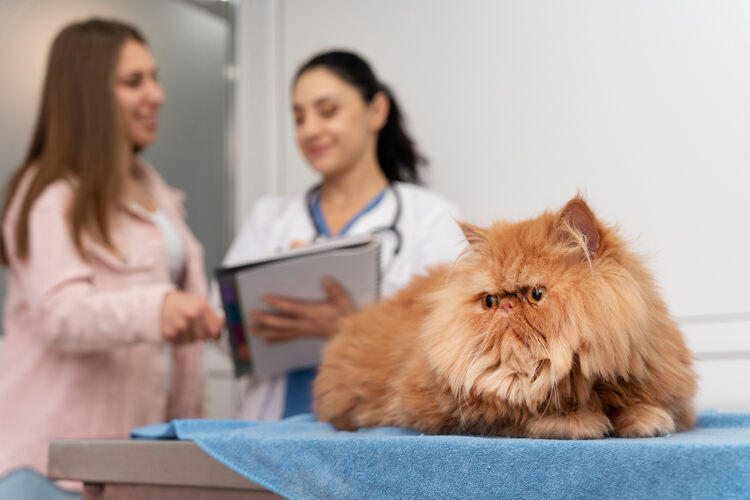When your pet starts struggling with walking, jumping, or balancing, it’s natural to worry about their health and quality of life.
Can a veterinary specialist address these mobility issues effectively?
Chesapeake Veterinary Neurology offers advanced solutions for pets facing neurological conditions that impact movement. From diagnosing nerve damage to recommending therapies and surgeries, these specialists focus on improving mobility and overall comfort.
How do they determine the cause of your pet’s difficulties, and what tools do they use?
In addition to hands-on examinations, many neurologists rely on cutting-edge technology, such as veterinary imaging and veterinary imaging in Maryland, to create a detailed picture of your pet’s condition.
In this article, we’ll explore how veterinary neurologists help pets regain mobility, the steps involved in treatment, and what owners can do to support their furry companions.
Signs Your Pet May Need a Neurologist
Pets with mobility challenges often display subtle signs before the condition worsens:
- Difficulty climbing stairs or jumping onto furniture.
- Limping or favoring one limb.
- Loss of balance or coordination.
- Muscle weakness or sudden changes in gait.
- Pain or reluctance to move.
Noticing these early signs and consulting a veterinary neurologist can prevent long-term complications and improve your pet’s quality of life.
How a Veterinary Neurologist Diagnoses Mobility Issues
Diagnosing mobility problems requires a combination of observation, testing, and imaging.
- Physical and Neurological Exams: The neurologist evaluates reflexes, gait, posture, and coordination.
- Advanced Imaging: Tools like MRI, CT scans, and X-rays provide a clear picture of the nervous system.
- Lab Tests: Blood work or other diagnostics may reveal underlying health issues.
Chesapeake Veterinary Neurology often incorporates veterinary imaging techniques in Maryland to pinpoint nerve damage or spinal conditions that contribute to movement difficulties.
Common Conditions Affecting Mobility
Pets may experience mobility challenges due to several neurological or musculoskeletal issues:
- Intervertebral disc disease (IVDD).
- Spinal cord injuries or malformations.
- Degenerative myelopathy in older dogs.
- Neuropathies affecting limb function.
- Brain or nerve disorders that impact balance.
Identifying the exact cause allows neurologists to design targeted treatment plans.
Treatment Approaches
Veterinary neurologists use multiple methods to restore mobility or reduce discomfort:
- Medication: Anti-inflammatories, pain relievers, or nerve-supporting drugs.
- Physical Therapy: Exercises, hydrotherapy, and guided movement sessions.
- Surgical Intervention: Corrective procedures for spinal or nerve issues.
- Assistive Devices: Mobility aids like carts or braces for long-term support.
Integrating these treatments with regular monitoring improves recovery outcomes and helps pets regain independence.
The Role of Veterinary Imaging
Veterinary imaging plays a critical role in understanding mobility issues:
- MRI and CT Scans: Reveal soft tissue and spinal cord problems.
- X-rays: Identify bone-related injuries or arthritis.
- Ultrasound: Detect internal complications affecting nerve function.
Veterinary imaging Maryland allows precise diagnosis, guiding neurologists in choosing the most effective treatment plan.
How Owners Can Support Their Pets
- Maintain regular check-ups to monitor progress.
- Follow prescribed exercises and medication schedules diligently.
- Make home adjustments for safety, like ramps or non-slip mats.
- Monitor changes in mobility or pain and report them promptly.
Active participation from owners ensures treatments are more effective and improves overall well-being.
Choosing the Right Veterinary Neurologist
- Look for board-certified specialists with experience in neurological and mobility disorders.
- Ensure the clinic offers advanced diagnostic tools, including veterinary imaging.
- Ask about rehabilitation programs and follow-up care.
- Consider reviews and success stories from other pet owners.
A qualified neurologist can provide a comprehensive approach to diagnosing, treating, and managing mobility issue.
Final Thoughts
Chesapeake veterinary neurology provides essential care for pets facing mobility challenges. By combining expert evaluations, advanced veterinary imaging, and personalized treatment plans, neurologists can help pets regain movement, reduce pain, and improve their quality of life. Early detection, accurate diagnosis, and consistent care make a significant difference in recovery. Pet owners who collaborate closely with veterinary specialists ensure their companions receive the best possible support, allowing them to live happy and active lives.




